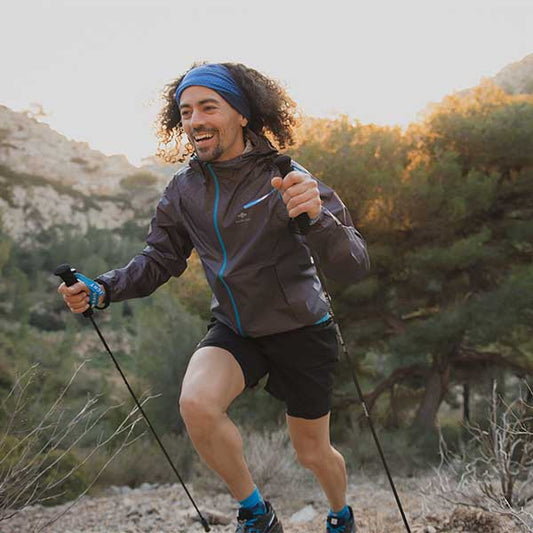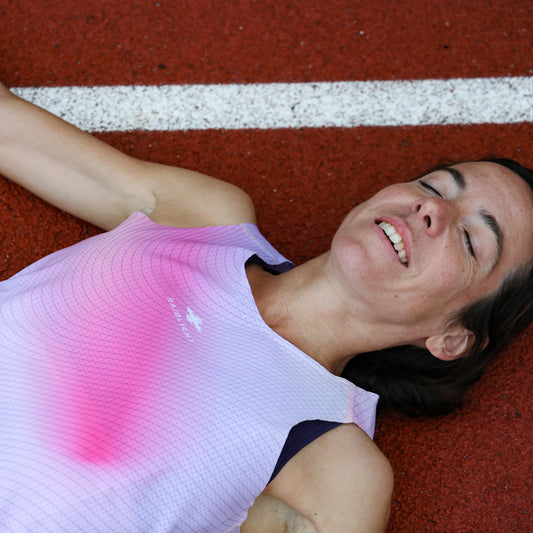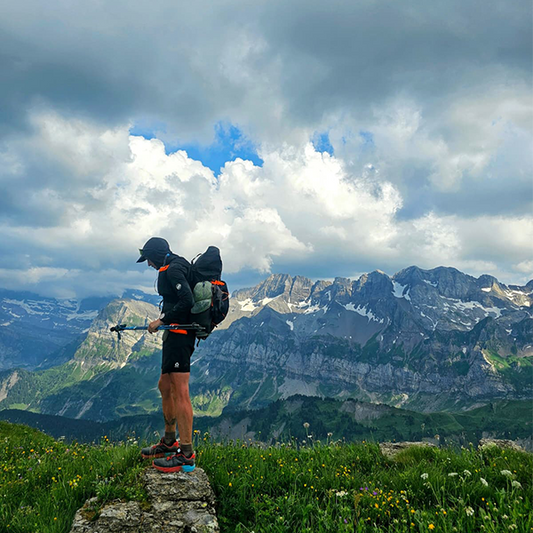Muscle cramps are involuntary, painful muscle contractions that can occur during prolonged exercise. They frequently affect runners, particularly when climbing, descending or after several hours of effort. Several causes have been identified:
· Electrolyte imbalance :excessive loss of sodium, potassium and magnesium through perspiration.
· Dehydration : insufficient intake of water and minerals during exercise.
· Muscle fatigue : a lack of preparation and endurance of the muscles involved.
· Mechanical factors : an unsuitable stride, unsuitable footwear or a lack of muscle strengthening.
Hydration: the key weapon against cramp
Hydration is essential to avoid dehydration and compensate for electrolyte loss. Here's how to manage your water intake:
Before the race
- Drink 500 to 700 ml water 1 to 2 hours before the race start.
- Add a pinch of salt or an electrolyte drink if you sweat a lot.
During exercise
- Drink regularly : 150 to 250 ml every 15-20 minutes, even if you don't feel thirsty.
- Alternate water and electrolytes to maintain a good mineral balance.
- Beware of excess! Too much sodium-free water can cause hyponatremia (lack of sodium).
After the effort
- Rehydrate with a mineral-rich water
- Add a lemon juice or bicarbonate to balance muscle acidity.
Nutrition: avoid cramps with the right diet
Diet plays a key role in preventing cramps. Here are the essential nutrients:
Essential electrolytes
- Sodium (salt) : present in mineral waters and broths.
- Potassium : bananas, sweet potatoes, green vegetables.
- Magnésium : almonds, dark chocolate, pumpkin seeds.
Food strategy
- Before the race : A meal rich in complex carbohydrates (brown rice, sweet potato), with plenty of water.
- During : natural energy bars, gels with sodium, dried bananas.
- After : recovery with a full meal (protein + vegetables + starch).
Muscle training and prevention
Good training considerably reduces the risk of cramp. Here's how to adapt your training:
Targeted muscle strengthening
- Pliometry : jumps, lunges and squats to strengthen calves and quadriceps.
- Proprioception : Balance work on an unstable board to stabilise the joints.
- Training : strengthening the abs to prevent premature fatigue.
Fractional and endurancee
- Work on lengthening your stride to reduce tension on the muscles.
- Long progressive outings to get the muscles used to prolonged effort.
- Alternate ascent and descent to limit muscle fatigue.
Bonus tip : Adopt an active recovery (light stretching, massage) and test your training strategies before an official race.
Want to go further? Click here for our advice on adapting your daily diet to your trail running.











1 comment
Merci pour tout ses éléments
Et conseils
💪💪💪